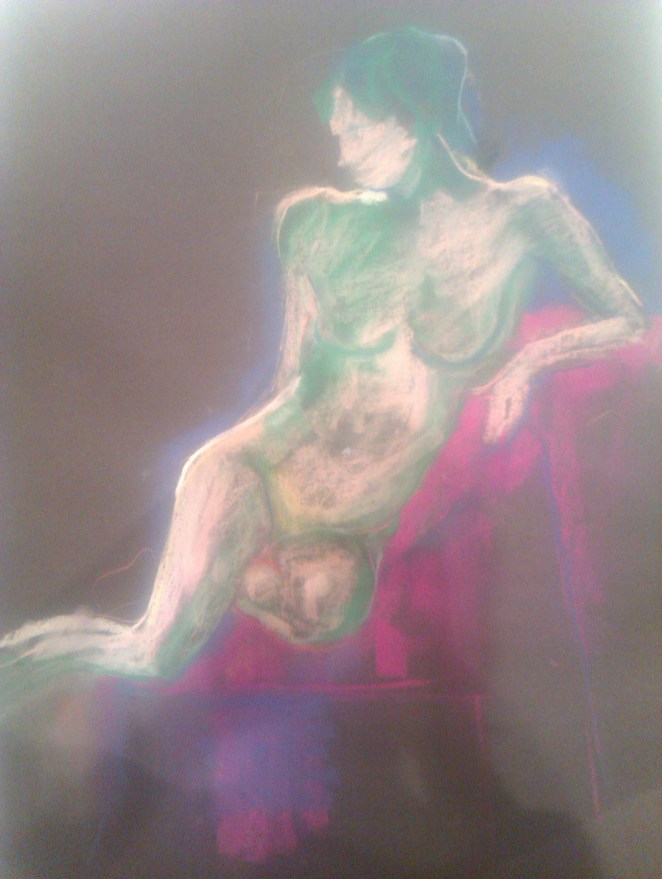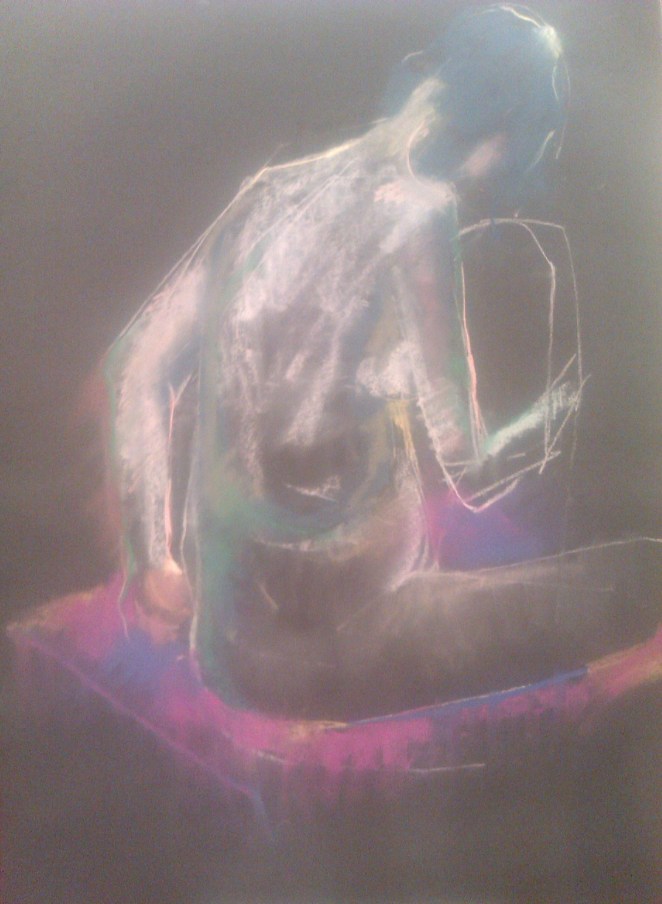Here are some pictures of recent poses I have done. If you are about to try life modelling for the 1st time and have not seen a model posing, this can give you some ideas for how to pose. It is a very individual activity however and must be necessarily adapted to suit each model.
These six 10 minute poses demonstrate some varieties of balance. One is leaning on a chair; there is one pose with weight distributed evenly between the legs; the others have most weight on one leg. The top left hand pose is a good example of a twist, whereby the body faces one direction lower down, then another further up. Artists tend to love a twist; it is a challenge, but also makes the pose more interesting and lets them see more of you from one position.

One leg up on the seat gives more levels to the pose. Arms leaning back makes the pose feel open and lends complementary triangles of negative space, shown here balancing the shape of the upward bent knee.

I am skinny so taking advantage of my angles works for me. Different body types do well to emphasize their features accordingly
Here my back is arched forward gently creating a different impression. My back naturally forms an ‘S’ shape which artists frequently want to draw. Posing to accentuate the ‘S’ however is not good for my back if done excessively. Sometimes I need to give it a break and rebalance by curving the other way. As a model it is vital to understand these needs of the body so you don’t over do it.
Negative space is the area in between which is not the body, and may be formed by limbs connecting with the body and creating a shape. Artists use particular measurements in a pose to relate to other lengths to help them achieve an accurate sense of proportion. They often hold a pencil up in line with a pose and with one eye open measure how much of the pencil length is taken up by the head for example. They then use that measurement to compare other details in the picture. The length of the head may be comparable to say that of the arm touching the knee.
Here is a post I wrote a while back about how particularly to pose in the group situation at Spirited Bodies;
http://spiritedbodies.com/2012/03/13/how-to-pose-guidelines-for-life-models-at-spirited-bodies/
That was for a previous event and I would like to add that on the forthcoming occasion – 21st July – there will be some shorter timed poses to warm up, from 5 to 15 minutes. Then there will be a period of freestyle posing when models may change pose when they prefer.
There will also be at least one timed half hour pose when I would like all models to remain still at the same time. This is good for feeling what life modelling is like, as well as giving artists a better chance of creating a good picture!
Also I have just found this http://jasonandthegoldenpose.wordpress.com/2012/07/04/finding-your-happy-place/#comment-103 which is the blog of a male model describing his experience as a life model. He’s got some good advice and covers many topics from what to think about whilst posing to what to expect financially from being an artist’s model.
Related articles
- MyMove™ – Yoga for Post Move Soreness (mymove.com)
- habitually (ecrisciyoga.com)
- Hold Your Pose… (cultivatingourselvestogether.com)
- Finding Your “Happy Place” (jasonandthegoldenpose.wordpress.com)






